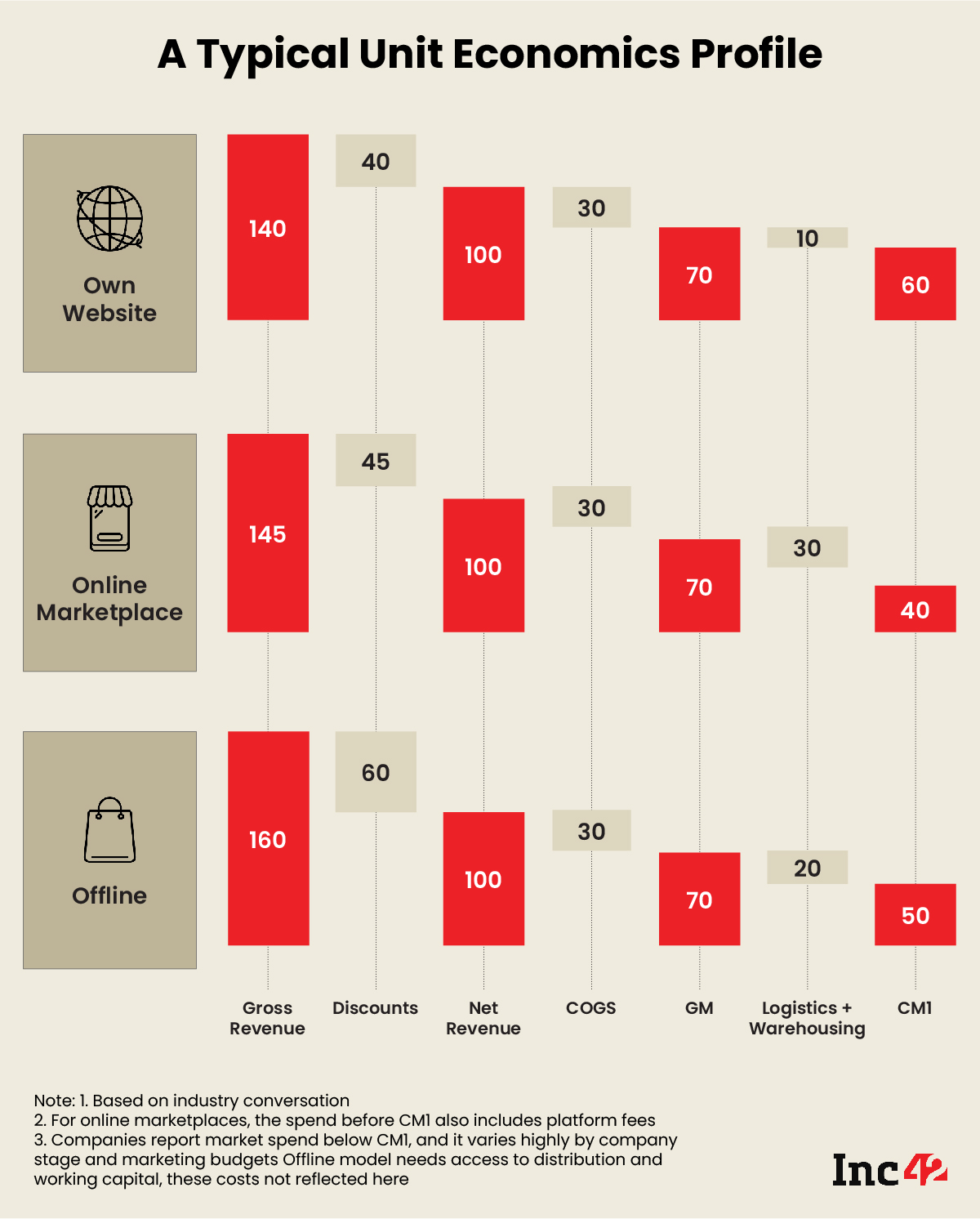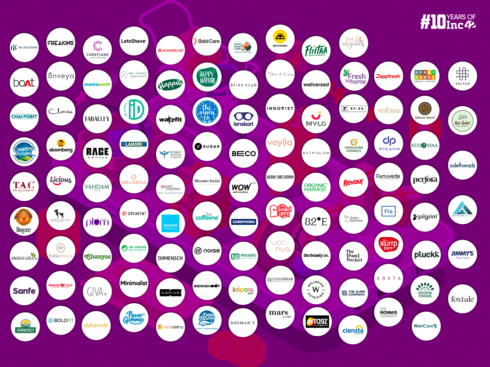
By 2021, the templatised playbook for creating a quick and quirky D2C brand was available to many
However, solving for customer pain points had taken a backseat while packaging and marketing (influencer or otherwise) became centre stage
Does that mean the 2018-20 D2C run-up was a fad? An ephemeral blip in business innovation that will die soon? No
By 2021, the templatised playbook for creating a quick and quirky D2C brand was available to many who could infuse an upfront capital of at least INR 2 – 3 Cr for contract manufacturing, packaging, digital marketing services and outsourced distribution.
However, solving for customer pain points had taken a backseat while packaging and marketing (influencer or otherwise) became centre stage. There were multiple similar brands mushrooming and growing without any defined mission across all major categories in health and wellness.
CAC: The Killer Of Sustainable Growth
The CAC (customer acquisition cost) started increasing with rising competition. The double whammy of Apple and Meta changing their personal data sharing and targeting rules dealt a heavy blow to marketing expenses. Apple introduced App Tracking Transparency (ATT), a policy that empowered iPhone users to restrict the usage of their data for targeting.
It halved the number of tracked Apple users in 2021. Meta removed the Detailed Targeting feature on all its platforms which restricted tracking of users based on sensitive information like health and sexual orientation. Most brands saw up to a 2x increase in their customer acquisition costs over the last 18 months. Even among celebrities, similar faces were advocating for these brands bringing fatigue and leading to their brand dilution.
Hence, only a few D2C companies could sustainably deliver even 20% of their sales via their own platform. Those that did face margin pressure from high own-channel CAC and operational challenges like reverse logistics management. RTOs ballooned to over 20% for most companies at scale as most purchases were impulse-driven following some marketing gimmick with patients rejecting the products once delivered.
Brands that did well from here, started shifting to multi-channel offline strategies as the total market size of Instagram buyers had hit its ceiling. As companies moved to offline channels, we saw the margins getting impacted.

Back To Offline Channels
In the process, D2C became B2C, which means that they started relying on the age-old FMCG tricks of banner ads and TV ads to popularise their products beyond the online kingdom and then sell through the archaic multi-stage logistics channels.
The brands had lost visibility into customer insights. This had become a vicious cycle — no customer insights led to undifferentiated products that do not solve any real pain points. The real consumption and user data for many brands showed poor retention and repeat purchase rates. Most brands had just managed to get repeat purchases from less than 30% of their users by month 12.
Even new form factors like gummies, oral strips and fizz tabs saw limited stickiness after the first curiosity-driven purchase. Interesting to note that these products had seen tremendous success and repeat purchases in the US (companies like Hims & Hers Health, Ro, Curology and more) where customers purchased in the first month at discounted prices and were auto-enrolled into subscriptions until they opt out. Since this model thankfully is not prevalent in India, the D2C repurchases saw a sharper dip.
Starting in 2022, the recession fears dealt a powerful shock to the D2C ecosystem. On one hand, people halted discretionary spending, while on the other hand, VCs closed their tap of marketing spending that sustained these startups and pushed for profitability overgrowth. D2C started facing strong headwinds. The 5x ARR valuation multiples came down to 2-3x and the conversation shifted to achieving CM2 (contribution margin: after cost of goods, delivery and marketing) positivity.
Conclusion
Does that mean the 2018-20 D2C run-up was a fad? An ephemeral blip in business innovation that will die soon? No. D2C is a meaningful way to empower users to take charge of their health.
Here’s our take on what could win the market beyond the templatised aspects of new brand creation:
True Product Differentiation
- A mix of product and services play that leverages technology
- Offers a comprehensive end-to-end solution to address a particular therapy area or medical condition or a customer pain point
Sustainable CAC
- Diversified acquisition strategy that relies on multiple channels while leveraging data
- Leverage communities, engaging content or affiliate channel partnerships, virality and referral strength (as high as 30% monthly sales from referral channels)
Solutions To Long-Term Or Chronic Problems
- Ideally, solutions that can become a part of the patient’s daily life through subscription packages will increase repeat usage and lifetime value
- Should have at least 200% repeat purchase by value in the first year after the first order
- Monthly repeat revenue should be 30-40% at a steady state
Customer Obsession And Execution Muscle
- Strong desire to engage with customers and hear customer insights
- Have a pulse on your own data trends to design better packages, bundles, and future products
- The ability to track healthcare outcomes is critical for health and wellness D2C brands
- Strong execution abilities to supplement the insights
Metric Sheet
- A great company would ideally
- Reach INR 100Cr revenue in 4 years or less
- Spend less than 40% of revenue on marketing in year one
- Invest in non-brand performance marketing for the first year
- Track 3-5x RoAS (Return on Ad Sales) – try earning 5 times the value you spend on advertising per customer
- Target 3x of first-order value over the 12 months – if you sell goods worth INR 100 in the first order, try selling at least 300 more to the customers over the next 12 months
- Have about 60% of users retained by the 12th month
- Have at least 30% of users who cross-purchase across multiple products of the company
- Companies should also have a robust, realistic and accurate approach to calculating costs and margins!
Robust Scale-Up Business Model
- Realising when to change or expand the value proposition as you scale
- Ability to introduce new products, unlock new distribution channels, and expand to geographies following a systematic plan
There are some great health and wellness D2C companies in the works that have begun to deliver on some of these metrics. We’re excited to see how the ecosystem evolves.






























 Ad-lite browsing experience
Ad-lite browsing experience